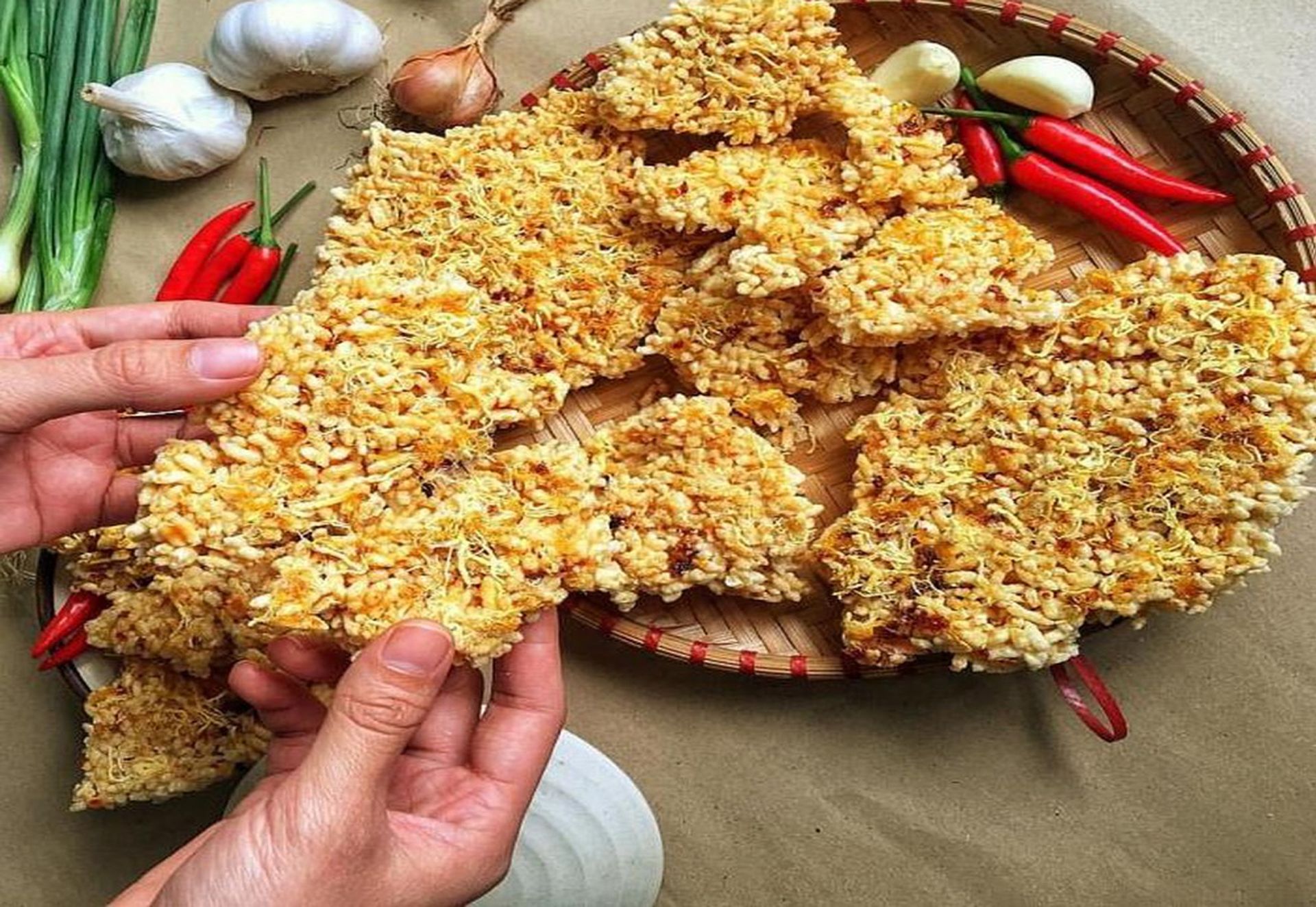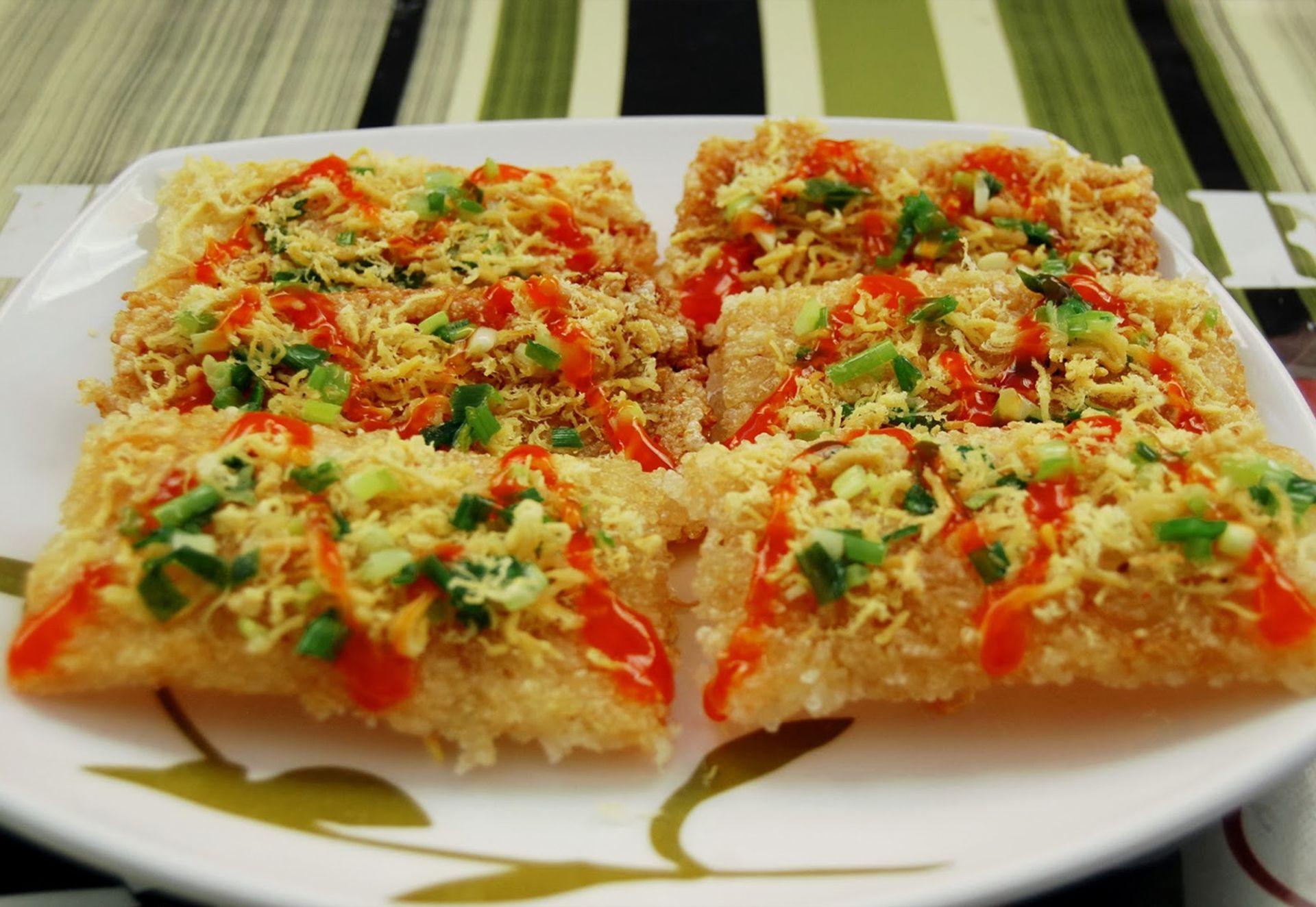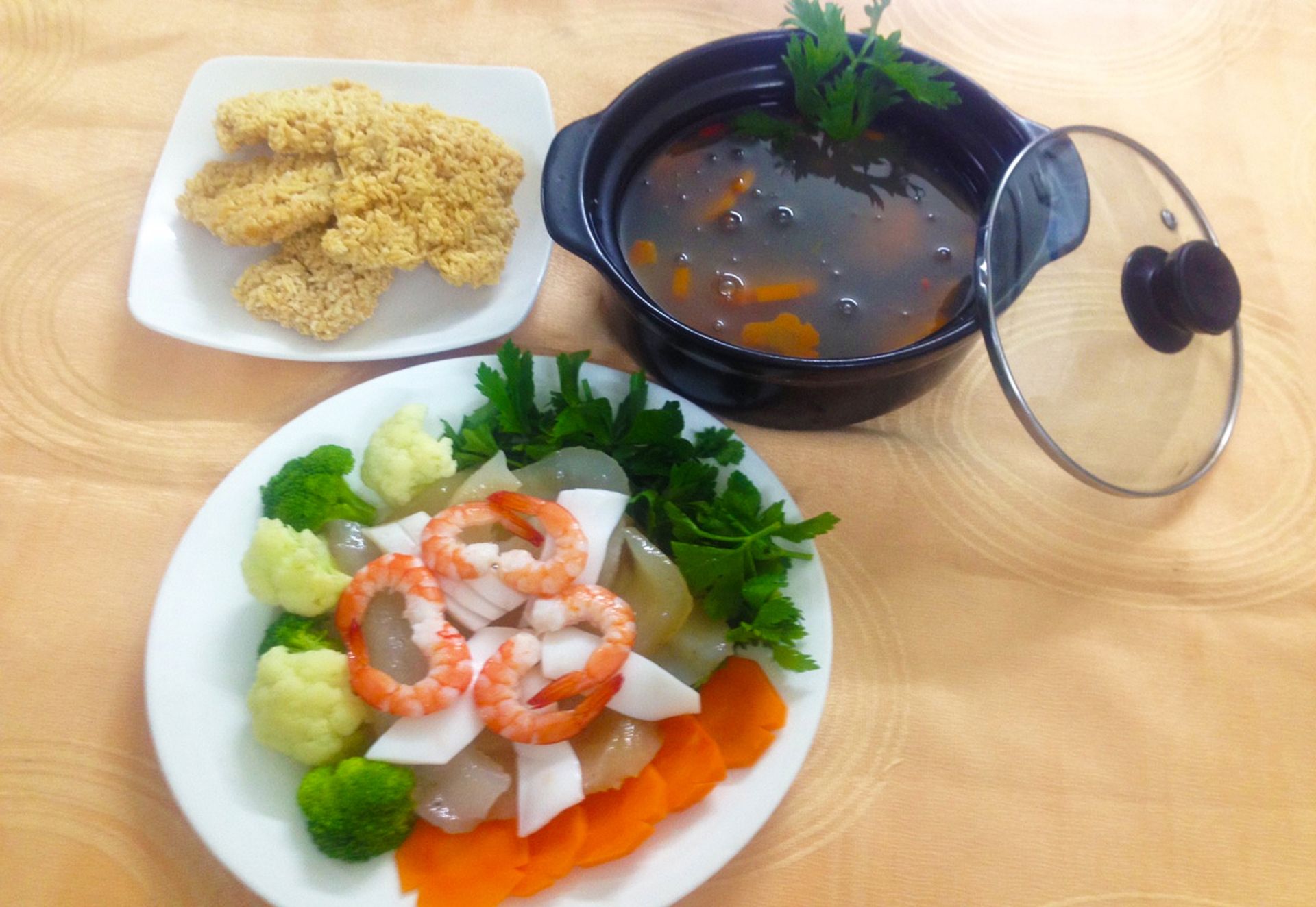For tourists who are passionate about travel, love to explore, and have visited Ninh Binh, they must have tried Ninh Binh burnt rice. In Hai Phong, there is also elderberry, but unlike Ninh Binh, the sauce of Hai Phong elderberry is made from fresh seafood of the region.
There are many people who say that making burnt rice is not difficult, just cook pressed rice, dry it and then fry it. That’s right, but the difficulty lies in the sauce itself, just like when eating spring rolls the deliciousness lies in the dipping sauce, and when eating pho is the broth. Hai Phong has a typical sauce when eating elderberry, which is seafood sauce, made from shrimp, crab, squid, tu comei, scallops, … delicious and full of healthy nutrients.
However, in order to make a delicious and authentic sauce, the ingredients must be the original ingredients in the sea areas of Hai Phong such as: Cat Ba tuoi has a characteristic sweet taste. The bowl of delicious sauce to eat with elderberry has the bright red color of tomatoes, the rich aroma, the sweetness of seafood, mixed with crispy fried rice, it’s perfect.
Many tourists who come to Hai Phong and have enjoyed other gifts such as crab cakes and spicy bread feel that “although it is delicious, it is delicious but quickly hungry”, so they must try “seafood burnt rice”. both delicious and full, full of energy for the next journey. This is also a very suitable dish to buy as gifts for relatives and friends.
- Address to buy seafood fried rice: Minh Khai burnt rice – 3C Minh Khai, Minh Khai ward, Hong Bang district, Hai Phong.
Source: Collected internet.
Vietnam is located in the Indomalaya ecological region. According to the 2005 National Environmental Status Report, Vietnam is among the 25 countries with high levels of biodiversity, ranked 16th worldwide in terms of biodiversity and is home to about 16% of the world's biodiversity. species in the world. 15,986 plant species have been found throughout the country, of which 10% are endemic. Vietnam has 307 species of nematodes, 200 species of oligochaeta, 145 species of acarina, 113 species of springtails, 7,750 species of insects, 260 species of reptiles. , 120 species of amphibians, 840 species of birds and 310 species of mammals, of which 100 species of birds and 78 species of mammals are endemic. There are also 1,438 species of freshwater algae, accounting for 9.6% of the total number of algae species, as well as 794 species of aquatic invertebrates and 2,458 species of marine fish. In the late 1980s, a population of Javan Rhinos was discovered in Cat Tien National Park and it is possible that the last individual of this species in Vietnam died in 2010.
According to the ups and downs of the nation's history, Vietnamese customs and practices are constantly being innovated according to social trends. One of the oldest and most influential customs in history is the custom of chewing betel. This is a custom that dates back to the Hung King period and originates from the legend of Trau Areca and this custom has become a typical image of the brotherhood and love between husband and wife of Vietnamese people. Not only the custom of chewing betel, Vietnam also has another custom that was born in ancient times, which is the custom of welcoming the new year, also known as Tet - traditional Tet.
Officially Vietnamese (the language of the Vietnamese (Kinh) people). This is the mother tongue of about 85% of the Vietnamese population, along with nearly three million overseas Vietnamese, most of whom are Vietnamese Americans. Vietnamese is also the second language of ethnic minorities in Vietnam. Although Vietnamese has vocabulary borrowed from Chinese and previously used Chinese characters (Confucian script) to write, then converted to Nom script, today Vietnamese uses the Latin alphabet, called Quoc Ngu. , with diacritics to write...
Lang Son, the prime land of the Fatherland, on spring days is more poetic with blooming peach blossoms and white apricot gardens stretching out. Traveling in the spring to Lang, visitors can not only explore the majestic mountain scenery but also immerse themselves in the spiritual cultural space of the residents of this place such as: Ky Cung Temple Festival, Ta Phu Temple Festival, Festival Dong Dang, Thanh Pagoda, Tam Thanh Pagoda, Tien Pagoda...



